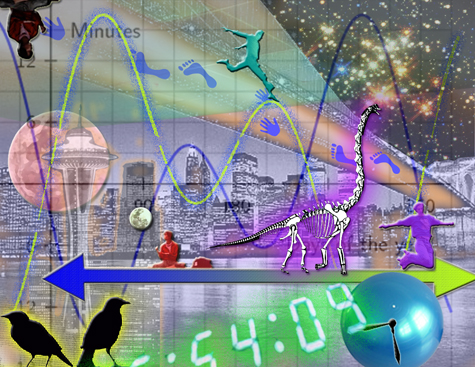Essay
Cityscape: the Avenues of a Touchable City
By Catherine SpanglerIllustration By Diana Kolsky

The city is under siege of a terrific will. Its very skeletal foundations are shifting in their steel beds deep beneath the tar-paved promenades. Startling angles of the sky can now be viewed from vantages previously unreachable. The rooftops are scattered like heartland seen in flight. The city is becoming what it is asked to be.
Parkour, or l'art du déplacement, is an experience of mobility, dangerous and exhilarating. The men and women who practice what is known to some as a tentatively defined sport call themselves traceurs and traceuses. Their movements are ideal instances of discipline and honed skill as they wield from building to street to rooftop in swift acrobatic motions. It seems only by some spectacular exhibition of chance that their postures are even possible within the scope of human physicality. In the practice of parkour, the city belongs entirely to the practitioner: it is an obstacle to overcome, the shortest distance between given points, the swiftest escape route. All paths homeward become a new experience of moving through a landscape. Indicators such as 'downtown' or 'streetside' shed their banal meanings. Walls and spires lose their stature as impediments. Conventional notions of mechanics are unfathomed. And perhaps most practical, unwanted pursuers are effectively evaded. Footage of parkour demonstrations (of which there are ample virtual archives) may be mistaken for scenes of agile martial artists fleeing an invisible pursuer. Often their catapulted forms are recorded unnerving people innocently running an errand or walking their dog around the block. Traceurs and traceuses move fearlessly through neighborhoods that appear sluggish in contrast to their intrepid steps. They scale the façades of abandoned buildings and steer through the deserted concrete rooms. The basic principles of speed and efficiency are applied to redefine the more complex relationship between person and place. The objective and distinguishing mark of the art is simple: to help pass any obstacle encountered. In times of emergency or otherwise, parkour allows for a beautiful escape. The belief that anything can be surmounted may seem irrational, or at least something that only a select group of people could be capable of achieving through an incredible exercise of determination. Yet you need only possess a sturdy pair of shoes, an able body, and a bold imagination to be a participant. Beyond what looks to be a game of bodily risk and the perfection of kinesis, parkour seeks to redefine what it means to move through space. Possessing the ability to re-imagine the city as a place that can be fluidly traversed opens up the compelling possibility of endless avenues of exploration. Movement no longer means the necessity of getting to and from work, the market, or the shore. The mind, through the experience of the body, has dismantled the pretenses under which it usually operates, and thus encounters the environment in a new way. Matter must be re-pieced together to make way for a different understanding of our capabilities in its stead. For what seems to be such an exclusively physical activity, parkour is only possible through an immense act of the mind. How novel it seems to live in a touchable city. Here is a vision of the newness of a corner, of vestibules, lampposts, window ledges and high-flying perches and the skylines they all form. The surrounding walls are no longer so. Without any such obstacles, imagine what open arenas now stretch ahead.
Please write us at newyorkmoon@gmail.com or leave us a message at 718-475-6134


